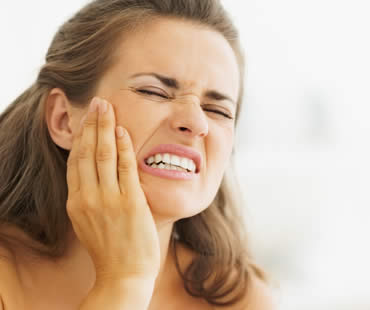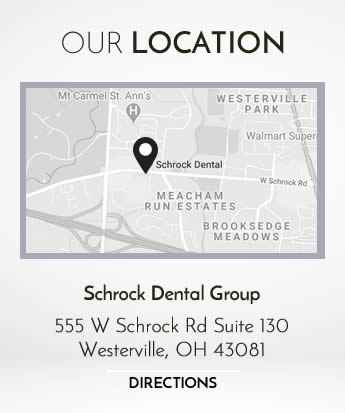
Teaching your kids good dental habits and making sure they get dental care are some of the most important things you can do for them. Guidelines for helping your child improve their oral health depend upon their ages. Here are some oral health tips for various stages of childhood.
Infants (up to 2 years):
It’s never too early to begin oral care! Clean your baby’s gums with a damp cloth after feedings to remove bacteria. Once the first tooth erupts, use a soft toothbrush for babies to gently brush the teeth and gums. Use a pea-sized dab of toothpaste and brush at least twice a day. Around the first birthday, begin taking your child to the dentist for regular checkups.
Preschoolers (2-4 years):
This age group has the highest incidence of tooth decay, because most preschoolers love sugary foods but may not love brushing their teeth. Brush your child’s teeth yourself until they are old enough to do it well, but continue supervising the process to make sure all areas are clean. Consider flavored or character fluoride toothpastes if it encourages your child to brush. Also, limit the amount of sugary foods and drinks your child consumes.
Young elementary (5-7 years):
As more and more teeth grow in, your child needs to brush carefully with fluoride toothpaste. Make sure all areas of your child’s mouth are being reached, and help your child use dental floss to clean between teeth and gums. Continue helping your child make healthy diet choices.
Older kids (over 8 years):
Most children should be able to brush on their own by age 8, but performing spot checks is a good idea to make sure they are doing a good job. Teach your child to brush after meals, especially when eating sugary or sticky foods, and emphasize the importance of flossing every day. Continue taking your child for regular dental checkups every six months, which will help create a life-long habit of good oral care.
Our dental office is located in Westerville

Teeth whitening is the most popular cosmetic procedure that dentists perform today. It can have a dramatic effect on your smile at a smaller cost than other cosmetic procedures. You can whiten your teeth yourself using at-home techniques, but often professional whitening with your dentist’s help achieves the fastest and most effective results. Let’s examine the whitening options provided by most dentists to help you evaluate what might work for you.
Whitening at your dentist’s office:
The dentist applies a whitening product to your teeth containing higher percentages of hydrogen peroxide than what is available in at-home kits. Heat or light may be used also. This technique produces quick, uniform results, but it does sometimes cause temporary gum irritation or tooth sensitivity. This method is expensive, ranging between $500 to $1,200.
Home whitening supervised by your dentist:
A customized mouthpiece will be created by your dentist for you to fill at home with whitening gel, which contains a lower strength of hydrogen peroxide then the in-office gel. You wear the mouthpiece at home for several hours each day, and your dentist supervises the whitening with regular checkups. This method is convenient and less expensive at $300 to $500, but it produces slower results than in-office methods.
Repeating the process:
Whichever type of teeth whitening technique you might choose, remember that it isn’t a permanent repair to your teeth. You will need to repeat the process every year or two. The length of time between treatments will increase if you don’t smoke and avoid foods that are known to stain your teeth, such as coffee and red wine.
Our dental office is located in Westerville

If you have damaged or decayed teeth you may be considering options to restore both the look and function of your smile. Crowns and veneers are both utilized by cosmetic dentists to accomplish these goals. Which should you choose? Both crowns and veneers have pros and cons, and some distinct differences.
A crown is a cap that is placed over the tooth to reinforce the tooth and restore its original size and shape. Crowns are bonded into place and cover the entire tooth that is visible above the gum line. Crowns are most often used when the tooth has serious problems with structural integrity, often caused by decay. Cracked, broken, or worn down teeth also get crowns. Crowns modify how the tooth looks, and can help restore a more perfect smile. Crowns can be made of stainless steel, resin, porcelain, ceramic and other metals.
Veneers are similar to crowns in that they are used to restore the appearance of a tooth. Veneers utilize a thin shell of either porcelain or composite material that is placed over the tooth to protect it from damage and correct its appearance. Veneers require the structure of the tooth surface to be altered to bond it to the tooth.
Veneers are most commonly used to restore the outward appearance of a tooth, while crowns are typically used for structural repair. If your goal is simply to change the appearance of your teeth, veneers may be the best option. If you have extensive tooth decay or trauma, a crown might be the best choice. Consult with your dental professional to find out if a crown or veneers would be most appropriate for your specific dental issues.
Schedule your appointment at our Westerville dental office

Sometimes an injury or tooth pain can occur suddenly, and immediate dental care may be required. It’s not always obvious when a problem needs emergency care, but some dental emergencies do need to be treated quickly to avoid infections or permanent damage. Here’s a guide to situations that are usually considered dental emergencies.
- Cracked or broken tooth – contact your dentist immediately. Rinse your mouth with water and hold a cold compress to the affected area until you can get to your dentist’s office.
- Excessive bleeding with lip or tongue bite – clean the area and use a cold compress. Go to the emergency room if the bleeding is severe or won’t stop.
- Jaw injury – if you think you may have broken your jaw, apply a cold pack and immediately to your dentist’s office or the emergency room.
- Knocked out tooth –rinse the root of the lost tooth if it’s dirty. Do not scrub or removed any tissue left on the tooth. Try reinserting the tooth into its socket, but if that isn’t successful, see your dentist right away. Placing the lost tooth in milk may help preserve the tooth until you can get professional help.
- Loose tooth – see your dentist immediately if one of your teeth is loosened. Take over-the-counter pain reliever if needed, and apply a cold compress.
- Lost crown or filling – place the crown or filling in a safe place and contact your dentist. To decrease sensitivity, you may apply clove oil and dental cement available at your drugstore, but only if you’ve gotten approval from your dentist.
- Severe or sudden toothache – rinse your mouth with warm water and gently floss around the tooth. Contact your dentist if your toothache persists.
- Swelling – painful swelling in your mouth may indicate an abscess, which is an infected area of pus that can become serious. See your dentist as soon as possible, and try rinsing your mouth with saltwater in the meantime.
If you need a dentist in Westerville contact us today

Your teeth and gums are physical assets that you want to keep healthy your whole life, and the best way to do that is to take care of them. Proper dental care needs to begin at a young age so that good habits are established for life. It is a parent’s role to teach children proper hygiene, and to ensure they get professional treatment. Here are some ways that you can help your child learn good dental habits.
Supervise brushing:
Parents should watch children brush their teeth, especially for ages seven and under, to ensure the appropriate amount of toothpaste is used and that none is swallowed. Have your child brush for about two minutes, and make sure all areas of the teeth and gums are cleaned. Provide tips and help as needed.
Establish good eating habits:
Teach your child that diet impacts oral health. Some foods worsen plaque buildup and introduce damaging acid into the mouth, leading to increased tooth decay and higher risk for cavities and gum disease. Certain foods and drinks are also known to stain teeth, or cause bad breath.
Promote water consumption:
Drinking water not only is good for your overall health, it’s also helpful to your mouth. Encourage your child to drink water after eating, especially if it’s not possible to brush teeth right away. Also, fluoridated water is proven to help fight cavities.
Visit the dentist:
Begin taking your child to the dentist around age one, so that the child gets good dental care and learns that dental visits aren’t scary. Have a positive attitude about checkups, and consider taking your child to a pediatric dentist who specializes in children’s oral health.
Be a role model:
As the saying goes, practice what you preach. Set a good example of brushing at least twice daily, flossing every day, limiting your intake of staining foods and drinks, and visiting your dentist regularly.
We look forward to seeing you in our Westerville dental office

It’s a fact of life that teeth can become dingy and yellowed through the years. Your diet, age, personal habits and more affect the shade of your teeth. Even with the best care, it’s nearly inevitable that at some point you’ll want to brighten your smile. Once you pursue teeth whitening, you’ll want to be sure to make your new smile last as long as possible.
Over-the-counter products are readily available from your local drugstore and simple to use. However, they can take a long time to obtain full results and even then, you may not achieve the desired shade you’d like. Professional teeth whitening is the fastest and most dramatic way to brighten your smile.
If you spend the time and money to whiten your teeth professionally, making it last will be important to you. Results can last for a long time, but probably not forever. Here are some tips for making your white teeth last longer:
- Watch your diet especially carefully for the first 48 hours following treatment. Your teeth are at the most risk for staining during this timeframe.
- For the first few days, avoid eating known staining foods like blueberries, beets, dark soups, marinades, sauces, curry or tomato products.
- At first, avoid broccoli, green beans, peas, sprouts, corn, or skinned potatoes. These have increased risk of particles getting stuck into the highly susceptible tooth pores after whitening treatment.
- Watch out for citrus fruits that are high in acidity, which can also make your saliva more acidic. Your teeth are more prone to damage from acid when they already have increased sensitivity from the whitening chemicals.
- Avoid drinking dark colas or coffee, since both can stain your teeth no matter when you drink them.
- Get in the habit of drinking from a straw so that dark colored drinks don’t come into as much contact with your teeth.
Choosing the right foods and drinks after teeth whitening can make a big difference in the length of time your teeth stay white. Make the best decisions to enjoy your bright smile.
We look forward to seeing you in our Westerville dental office











